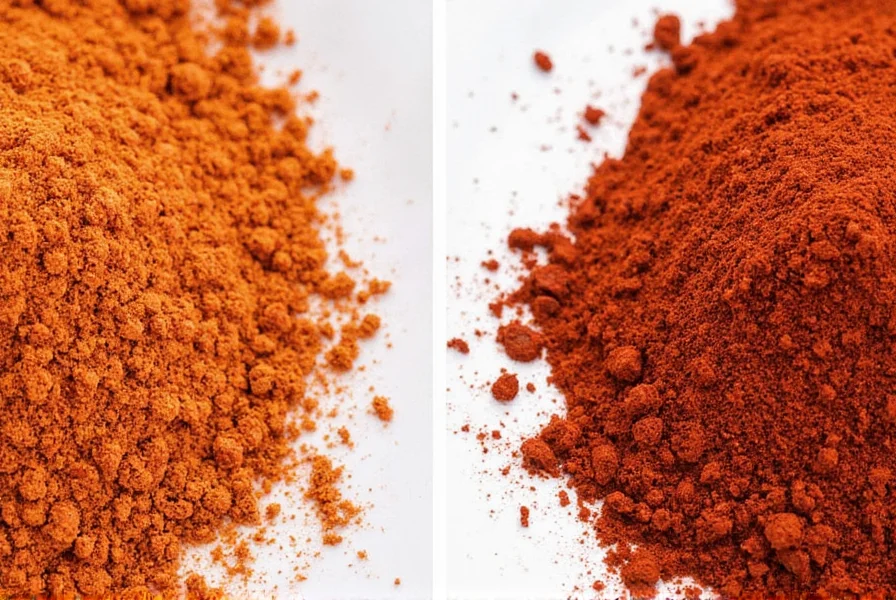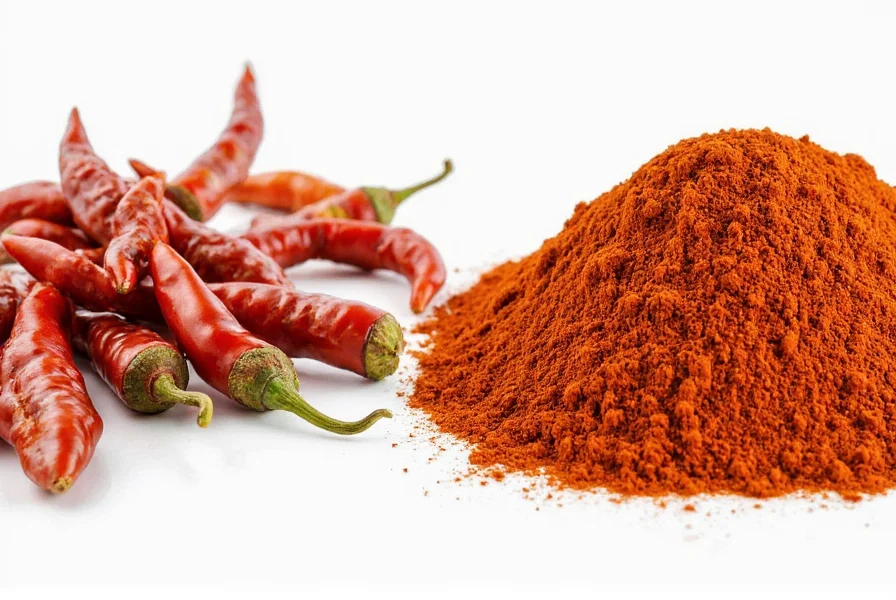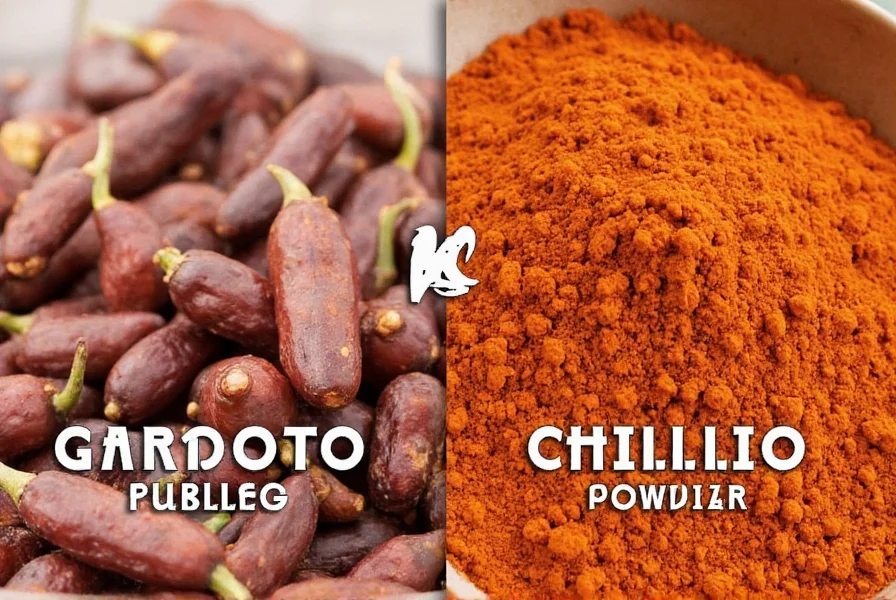Chipotle Chile Pepper vs Chili Powder: Which One Brings the Heat to Your Kitchen?
Table of Contents
- Introduction
- What Are Chipotle Chiles and Chili Powder?
- Flavor Profiles Compared
- Culinary Uses: When to Use Each
- Heat Level Showdown
- Buying Guide
- Top Recipes That Use Chipotle or Chili Powder
- How to Store Them for Maximum Flavor
- Frequently Asked Questions
- Conclusion
Introduction
If you've ever stood in front of a spice rack trying to decide between chipotle chile pepper and chili powder, you're not alone. These two ingredients may sound similar — but they’re actually quite different in terms of flavor, heat level, and culinary application.
In this article, we’ll break down everything you need to know about chipotle chile peppers versus chili powder — from what they are, how they taste, and when to use each. Whether you’re a seasoned chef or just starting out in the kitchen, this guide will help you spice up your meals like a pro.
What Are Chipotle Chiles and Chili Powder?
Let’s start with the basics. Understanding what these ingredients are made of can help you make smarter choices in your cooking.
Chipotle Chile Peppers
Chipotle chile peppers are essentially dried, smoked jalapeño peppers. They’re known for their distinct smoky flavor and moderate to high heat level (ranging between 2,500–8,000 Scoville Heat Units).
- Made by drying and smoking ripe red jalapeños
- Can be used whole, powdered, or canned in adobo sauce
- Common in Mexican and Southwestern dishes
Chili Powder
Despite its name, chili powder is not simply ground chilies — it's typically a blend of spices. The base is usually cayenne pepper, but it often includes garlic powder, onion powder, cumin, oregano, and sometimes salt.
- A spice mix containing dried chilies and other seasonings
- Variations exist depending on the brand or region
- Used in chili con carne, Tex-Mex, and global cuisines

Flavor Profiles Compared
The biggest difference between chipotle and chili powder comes down to flavor. Here’s how they stack up:
| Characteristic | Chipotle Chile Pepper | Chili Powder |
|---|---|---|
| Primary Flavor | Smoky, earthy, slightly sweet | Spicy, complex, herbal notes |
| Main Heat Source | Capsaicin in dried jalapeño | Cayenne pepper or mixed chilies |
| Additional Notes | Slight wood-smoked undertone | Often contains garlic, cumin, oregano |
Which One Tastes Better?
It really depends on the dish. Chipotle adds a deep, campfire-like flavor that’s perfect for barbecue sauces, slow-cooked stews, and salsas. Chili powder gives a broader, spicier base that works well in rubs, chili con carne, and dry spice mixes.
Culinary Uses: When to Use Each
Here’s a handy list of when to reach for chipotle and when to go for chili powder:
Best Uses for Chipotle Chile Peppers
- Mole sauces: Adds depth and smokiness
- Adobo marinades: Especially when using canned chipotle in adobo
- Meat rubs: Works wonders with pork or chicken
- Bean dishes: Enhances soups and refried beans
Best Uses for Chili Powder
- Chili con carne: The staple ingredient
- Tex-Mex seasoning: Perfect for tacos and fajitas
- Vegetable spice blends: Great for roasted potatoes or corn
- Dips and dressings: Add kick to sour cream or mayo
Heat Level Showdown
If you're wondering which one will make your tongue tingle more, here's the breakdown:
Chipotle Chiles
- SHU (Scoville Heat Units): 2,500 – 8,000
- Medium to hot, depending on variety and preparation
- More heat in seeds and veins than flesh
Chili Powder
- SHU varies wildly due to blend (typically 1,000 – 5,000)
- Less intense unless mixed with extra cayenne
- Heat spreads more evenly across the tongue
Verdict:
Chipotle tends to bring more concentrated heat, especially if used whole or in adobo. Chili powder offers a more rounded, less fiery experience — though some brands crank up the heat.
Buying Guide
When shopping for chipotle or chili powder, here’s what to look for:
Chipotle Chiles
- Freshness: Look for rich mahogany color; avoid faded or brittle peppers
- Packaging: Whole peppers should be sealed tightly; adobo-packed jars should have a thick sauce
- Brand recommendation: La Costeña (adobo), El Yucateco (dried)
Chili Powder
- Label reading: Check for fillers like flour or anti-caking agents
- Ingredients: Pure chili powder (just ground chilies) vs. “chili seasoning” (blends)
- Best for: Making homemade taco seasoning? Opt for pure ancho-based chili powder.
Top Picks for Chili Powder
| Product | Features | Use Case | Audience |
|---|---|---|---|
| McCormick Chili Powder | Balanced blend, widely available | Classic chili recipes | Home cooks |
| Simply Organic Chili Powder | Organic, non-GMO, no additives | Health-conscious cooking | Organic food lovers |
| Ancho Chili Powder (pure) | Deep, fruity, mild heat | Southwest mole or sauces | Advanced home cooks |
Top Recipes That Use Chipotle or Chili Powder
Ready to get cooking? Try these crowd-pleasing recipes using each ingredient:
Chipotle-Inspired Recipes
- Chipotle Lime Mayo: Blend chipotle in adobo with mayo, lime juice, and garlic.
- Slow-Cooked Pork Tacos: Rub shoulder with chipotle powder, cumin, and orange zest.
- Chipotle Corn Chowder: Smoky sweetness pairs beautifully with creamy corn soup.

Chili Powder Recipes
- Texas-Style Chili: Brown beef, add onions, tomatoes, and plenty of chili powder.
- Chili-Rubbed Fries: Toss fries with chili powder, paprika, and salt before baking.
- Chili-Spiced Hummus: Add chili powder to tahini and chickpeas for a spicy dip.
How to Store Them for Maximum Flavor
Proper storage ensures your spices stay fresh longer and deliver optimal flavor:
Storing Chipotle Chiles
- Dried chipotles: Keep in an airtight container in a cool, dark place — up to 6 months
- Canned chipotle in adobo: Refrigerate after opening and use within 2 weeks
Storing Chili Powder
- Store in a cool, dark pantry — away from moisture and light
- Expect shelf life of 1–2 years, though potency fades after 6 months
- Freeze for longer storage (especially if pure chili powder)
Frequently Asked Questions
Still have questions about chipotle vs. chili powder? We’ve got answers!
Can I Substitute Chipotle for Chili Powder?
Yes, but only in small amounts and with caution — chipotle is smokier and more concentrated. Use half the amount and adjust as needed.
Is Chili Powder Just Crushed Chilies?
No! Most store-bought chili powders contain a blend of chilies and other spices like cumin and garlic. True “chili powder” (just ground chilies) is harder to find and labeled as such.
What’s the Best Way to Add Chipotle Flavor Without Too Much Heat?
Use the adobo sauce instead of the whole pepper — most of the flavor is in the sauce, while the heat is in the seeds and skin.
Conclusion
So, chipotle chile pepper vs chili powder — which one deserves a permanent spot in your spice rack? The answer is both! While they’re different in flavor, texture, and usage, each brings something unique to the table.
Chipotle chiles deliver that unmistakable smoky depth perfect for sauces, marinades, and grilled meats. Chili powder is your go-to for classic Tex-Mex dishes, hearty stews, and quick spice blends.
Now that you know how to use them, don’t be afraid to experiment — try combining them in a single recipe for layers of flavor and heat. Happy spicing!











 浙公网安备
33010002000092号
浙公网安备
33010002000092号 浙B2-20120091-4
浙B2-20120091-4